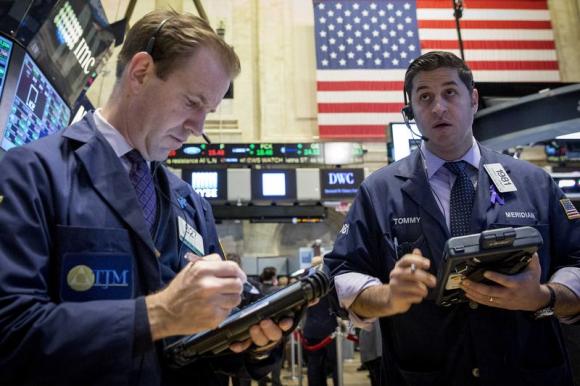
20/F, Building 5, Yard 1, Yuetan South Street, Xicheng District, Beijing China Code:100033
Tel: 010-68063910 Fax: 010-68066630
Copyright 2004-2017 All Rights Reserved. China Trustee Association
京ICP备 19023601号

Investors in U.S.-based mutual funds poured $6.1 billion into bond funds in the week ended Jan. 28 as central bank action in Europe and the United States underscored the relative attractiveness of U.S. fixed-income assets, data from the Investment Company Institute showed on Wednesday.

Traders work on the floor of the New York Stock Exchange February 3, 2015.
Investors in U.S.-based mutual funds poured $6.1 billion into bond funds in the week ended Jan. 28 as central bank action in Europe and the United States underscored the relative attractiveness of U.S. fixed-income assets, data from the Investment Company Institute showed on Wednesday.
The inflows marked the biggest weekly surge in new commitments since May 2013 and the third straight week of new demand, according to the data from ICI, a U.S. mutual fund trade organization. Stock funds attracted $4.3 billion, the biggest inflows since October.
Funds that specialize in U.S. stocks attracted $3.5 billion, the biggest inflows since October and the second straight week of inflows, while funds that specialize in international stocks attracted $888 million for a fourth straight week of inflows.
The inflows into both stock and bond funds came during a busy week of central bank action, with the European Central Bank launching a landmark bond-buying program on Jan. 22 and the Federal Reserve weighing in on the U.S. economy after a two-day policy meeting on Jan. 28.
"The ECB bond-buying reinforced the outlook that rates will stay lower in Europe for a longer period of time," said Richard Sichel, chief investment officer of The Philadelphia Trust Co.
While the ECB program made U.S. Treasuries more attractive than European bonds, the Fed's comments supported the view that U.S. rates would stay lower for longer, Sichel said. The Fed's first rate hike is widely expected to hurt bond prices, which move inversely to yields.
The Fed acknowledged a decline in certain inflation measures, which many investors viewed as a dovish sign. Sichel said the inflows to stock funds showed bargain-hunting over a period when the benchmark S&P 500 stock index plunged 1.5 percent.
Hybrid funds, which can invest in stocks and fixed income securities, attracted $1.7 billion, the biggest inflows since last March.